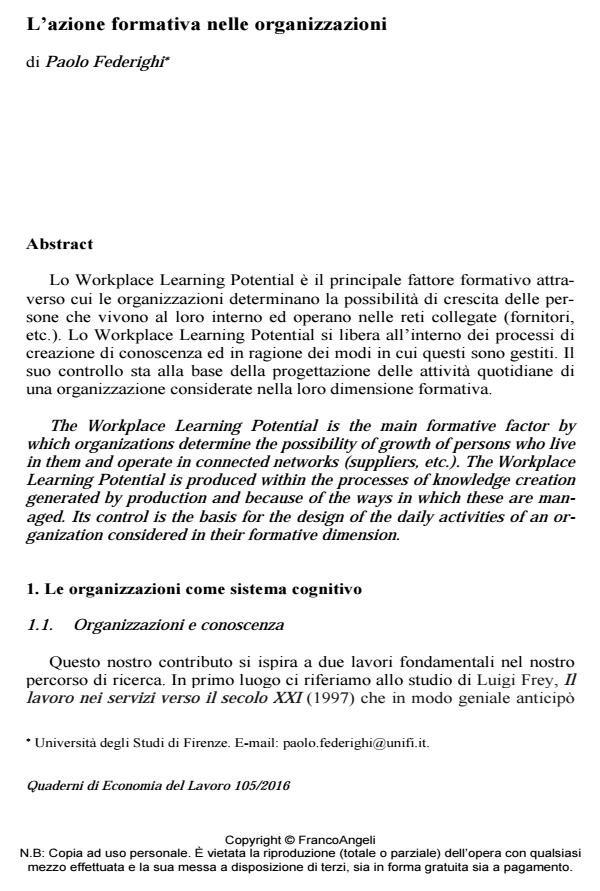L’azione formativa nelle organizzazioni
Titolo Rivista QUADERNI DI ECONOMIA DEL LAVORO
Autori/Curatori Paolo Federighi
Anno di pubblicazione 2017 Fascicolo 2016/105
Lingua Italiano Numero pagine 19 P. 115-133 Dimensione file 218 KB
DOI 10.3280/QUA2016-105005
Il DOI è il codice a barre della proprietà intellettuale: per saperne di più
clicca qui
Qui sotto puoi vedere in anteprima la prima pagina di questo articolo.
Se questo articolo ti interessa, lo puoi acquistare (e scaricare in formato pdf) seguendo le facili indicazioni per acquistare il download credit. Acquista Download Credits per scaricare questo Articolo in formato PDF

FrancoAngeli è membro della Publishers International Linking Association, Inc (PILA)associazione indipendente e non profit per facilitare (attraverso i servizi tecnologici implementati da CrossRef.org) l’accesso degli studiosi ai contenuti digitali nelle pubblicazioni professionali e scientifiche
Lo Workplace Learning Potential è il principale fattore formativo attraverso cui le organizzazioni determinano la possibilità di crescita delle persone che vivono al loro interno ed operano nelle reti collegate (fornitori, etc.). Lo Workplace Learning Potential si libera all’interno dei processi di creazione di conoscenza ed in ragione dei modi in cui questi sono gestiti. Il suo controllo sta alla base della progettazione delle attività quotidiane di una organizzazione considerate nella loro dimensione formativa.
- Cultura della Qualità e Faculty Development: Sinergie da Sviluppare Giovanna del Gobbo, in EXCELLENCE AND INNOVATION IN LEARNING AND TEACHING 1/2021 pp.5
DOI: 10.3280/exioa1-2021oa12063 - Lavoro e apprendimento trasformativo in carcere Francesca Torlone, Paolo Federighi, in EDUCATIONAL REFLECTIVE PRACTICES 2/2021 pp.5
DOI: 10.3280/ERP2020-002001
Paolo Federighi, L’azione formativa nelle organizzazioni in "QUADERNI DI ECONOMIA DEL LAVORO" 105/2016, pp 115-133, DOI: 10.3280/QUA2016-105005